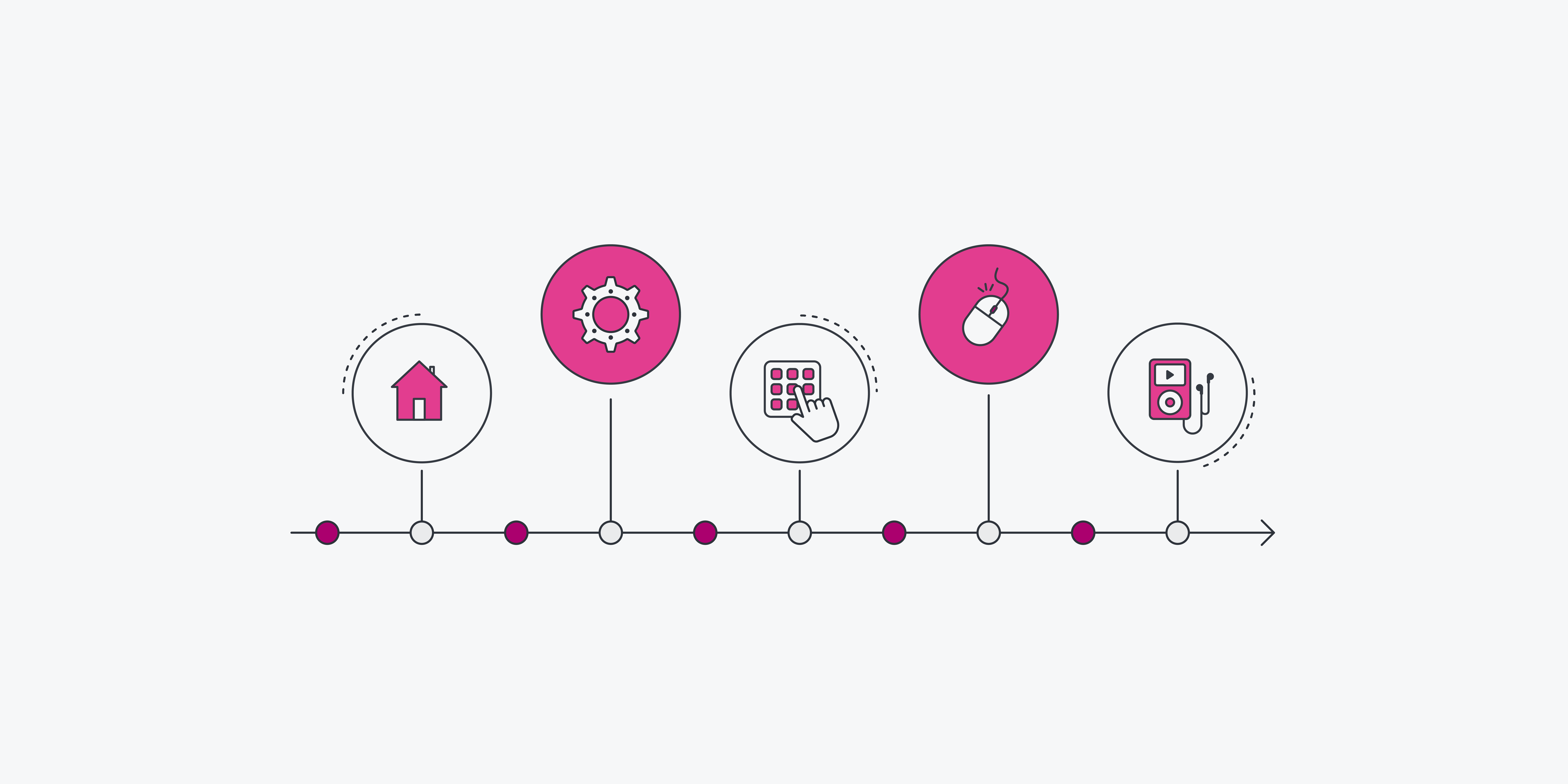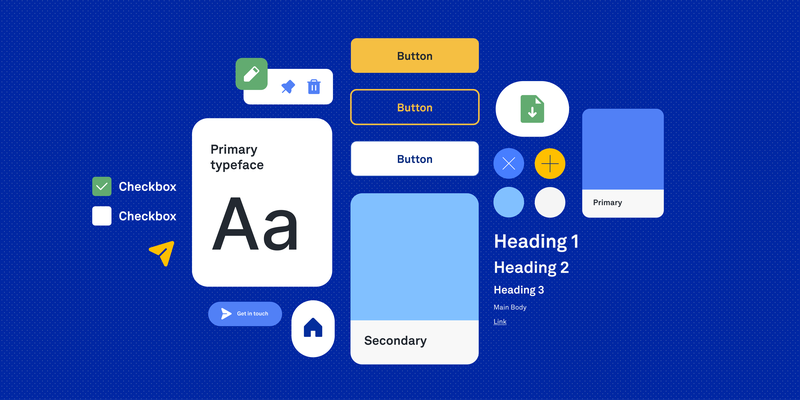Every superhero has an origin story, and the same is true of every profession—including UX. And just like learning a superhero’s origin story can help you better understand and appreciate them, learning the origin story of UX will help you better understand and appreciate this ever-growing field. Discovering the history of UX may even lead you to think differently about what the field is and where it can go in the future.
While today we associate UX with digital technology and interactive products, like websites, apps, and smartphones, this perspective actually limits our view of how the field evolved. In fact, UX is sort of like the field’s superhero name because, before cognitive psychologist Don Norman coined the term when he was working at Apple in the 1990s, UX was known by other names. And that means it’s a lot older than many UX designers may realize.
This post will outline the history and evolution of UX design. It’s a story that goes all the way back to ancient times and demonstrates the true depth and breadth of this important field.
Here are the key points in time we’ll look at:
- UX in ancient times: Feng Shui and ergonomics
- A Renaissance-era trailblazer: Leonardo da Vinci
- Modern pioneers:
UX in ancient times: Feng Shui and ergonomics
The first stop on our tour of the history of UX is China in approximately 4000 BC. Of course, there were no websites or apps to develop user experiences for; however, the interiors and landscapes people lived and worked in still had to be planned so their users could easily interact with them.
The philosophy of Feng Shui was invented around this time and suggested that the best space was one in which the arrangement of objects was aligned with the space’s flow of energy. In theory this might sound vague, but in practice it means using layout, materials, and colors to ensure a space is as harmonious, balanced, and functional as possible. In other words, Feng Shui is all about optimizing a space so it provides a great user experience.
If we fast forward a few thousand years to 500 BC, we’ll find ourselves in Ancient Greece, where evidence indicates that ergonomic principles played a major role in the way tools and work spaces were designed. Ergonomics is all about understanding the relationship between humans and their work environment with the goal of designing user-centric workplaces where workers won’t be uncomfortable or at risk of injury.
One example of the ancient Greeks’ focus on ergonomics comes from Hippocrates who, in describing the optimal layout of a surgeon’s workspace, writes: “[Tools] must be positioned in such a way as to not obstruct the surgeon, and also be within easy reach when required. They must be close to the surgeon’s operating hand.” The issues Hippocrates identified while describing the best work space for the surgeon will remind many UX designers of the issues they consider when deciding how to create the best products for users.
A Renaissance-era trailblazer: Leonardo da Vinci
Next we move to the 1400s and the work of the Renaissance-era polymath Leonardo da Vinci. While today da Vinci is best known as the painter responsible for the Mona Lisa, he was also a sculptor, architect, scientist, and inventor. So when da Vinci was commissioned by the Duke of Milan to design the kitchen for a high-profile feast, he got creative. Years before it went into regular use during the Industrial Revolution, da Vinci designed the first conveyor belt to transport the food. He also created a sprinkler system for safety and a larger oven that could cook at higher temperatures so the food would be done more quickly.
While his inventions all worked well, the new use of technology also ended up creating a perfect storm of disasters during the event: the conveyor belt was either too fast or slow depending on the circumstances; the oven cooked faster than expected, leading to burnt food; and the oven heated the food so quickly it started a fire that set off the sprinklers. Da Vinci was no doubt a genius, but this incident was an early lesson in UX design; although da Vinci invented exciting new technology, his failure to ensure it met his users’ needs meant they were unable to use it in the way he intended, leading to a terrible user experience—and no doubt a very angry Duke of Milan.
Modern pioneers
That takes us into the twentieth century where the history of UX shifts into high gear as the rate of technological innovation takes off.
Early 1900s: Frederick Winslow Taylor and Henry Ford
In the early 1900s, both ergonomics and the conveyor belt were once again central to the evolution of UX. Henry Ford employed the conveyor belt as a key component in his Model T Assembly Line, which significantly sped up the time it took to build a car.
Around the same time, mechanical engineer Frederick Winslow Taylor wrote The Principles of Scientific Management, which outlined what he learned from his extensive research on how workers interacted with their tools. While both Ford and Taylor were more interested in the efficiency of work than on the comfort and safety of workers, their focus on optimizing worker’s relationship with their tools and workspace is reminiscent of some of the issues UX designers focus on today.
1940s: Toyota’s human-centered production team
A few decades later, in the 1940s, another car company, Toyota, was once again on a quest for workplace efficiency. But its solution wasn’t to make its workers conform to new tools. Instead, it aspired to ensure its tools conformed to its workers. The Toyota Production System was created with people in mind, making it an important precursor to user-centered design.
Plus, even after the system was put in place, worker input continued to be encouraged. Workers could even stop the assembly line if they wanted to point out problems or share ideas on improvements to the process, an early example of user testing.
1950s: Bell Labs
UX pioneer Jakob Nielsen points to Bell Labs in the 1950s as a pioneer in user experience design. Not only did Bell Labs hire the first psychologist to assist with the design of telephones in 1945, by the 1950s, it went beyond ergonomics to ensure an ideal user experience when designing the touchtone keypad—a design that’s still in use on phones today.
1955: Henry Dreyfuss and the study of cognitive science
By 1955, Henry Dreyfuss, an industrial designer, published Designing for People, which champions designing products with the products’ users in mind. In a 1950 article for Harvard Business Review, Dreyfuss stated: “If the point of contact between the product and people becomes a point of friction, then the designer has failed. If, on the other hand, people are made safer, more comfortable, more desirous of purchase, more efficient—or just plain happier—by contact with the product, then the designer has succeeded.” An observation that sums up the current philosophy of the UX field.
At the same time that Dreyfuss was outlining his design ideas, in academia, a small number of scholars was starting to research what we now think of as cognitive science. Cognitive science’s study of human memory and motivation, as well as its interest in the way computers can augment human cognition, remain important cornerstones of UX design today.
1970s: Xerox
All of these developments started to converge as the era of personal computing began. Much of the foundation for the personal computer as we know it today was laid in the 1970s at Xerox’s Palo Alto Research Center, or PARC, where innovations in technology for work were being investigated by both psychologists and engineers. Key computing features, including the graphical user interface, computer-generated bitmap graphics, and the mouse, were invented at PARC.
1980s: Apple and the rise of personal computing
PARC’s work was key to the development of the Apple Macintosh, which was the first commercially available personal computer when it hit the market in 1984. Although the first personal computer was created in 1974 by the company MITS, it was the mass appeal of Apple’s Macintosh, with its graphical user interface, built-in screen, and mouse, that resulted in computers going mainstream. Apple has remained at the forefront of UX since then, especially due to popular innovations like the iPod and the iPhone.
1993: Don Noman coins a new term
As mentioned above, Apple was also the site where the term “user experience” was invented. Notes from 1993 indicate that this was the year that Don Norman, then a User Interface Architect at the company, changed his title to User Experience Architect. Norman explained that he felt it was important to come up with a new term for his work “…because I thought Human Interface and usability were too narrow: I wanted to cover all aspects of the person’s experience with a system, including industrial design, graphics, the interface, the physical interaction, and the manual.”
The present and future of UX
Today, UX is a major buzzword and many companies are realizing they need UX designers on their teams. Yet, Don Norman laments that UX has evolved away from his original intention for the term, clarifying that user experience is supposed to be “…everything that touches upon your experience with the product, and it may not even be near the product.”
With the expansion of UX beyond websites, apps, and smartphones and into innovations like virtual reality, artificial intelligence, augmented reality, inclusive design, voice technology, wearables, and more, it seems UX will likely increasingly resemble Norman’s original definition. For example, you can’t design a self-driving car without taking into account every aspect of the experience from the moment the user approaches the vehicle until they end their interaction with it.
As UX becomes more widely understood and technology is integrated into more of the products we interact with throughout our day, UX designers will become even more in demand and will find more ways than ever to utilize their skills.
If you’d like to learn more about what modern-day UX experts do, take a look at a typical day-in-the-life of a UX designer. And, if you’d like to learn in-demand UX skills yourself, here’s a beginner’s guide on how to get started in the field.





